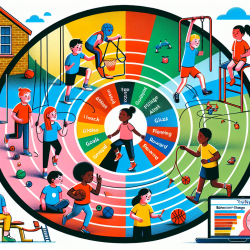As practitioners dedicated to fostering positive outcomes for children, we often seek evidence-based strategies to guide our interventions. The study "Development of a School-Based Intervention to Increase Physical Activity Levels Among Chinese Children: A Systematic Iterative Process Based on Behavior Change Wheel and Theoretical Domains Framework" provides a comprehensive approach to enhancing physical activity in schools. Here, we will explore how you can implement the outcomes of this research to improve your practice and encourage further inquiry.
Understanding the Study
The research utilized the Behavior Change Wheel (BCW) and Theoretical Domains Framework (TDF) to systematically develop an intervention aimed at increasing physical activity among Chinese children. The process involved:
- Understanding behavior through literature review
- Identifying intervention options using the TDF-intervention function mapping table
- Selecting content and implementation options through behavior change technique (BCT) taxonomy and literature review
- Finalizing the intervention content through expert consultation, patient and public involvement, and piloting
Key Findings
The study identified 10 relevant TDF domains to encourage physical activity among Chinese children, including knowledge, memory, attention and decision processes, social influences, and environmental context and resources. The intervention included seven functions: education, persuasion, environmental restructuring, modeling, enablement, training, and incentivization, and incorporated 21 BCTs delivered over 16 weeks.
Implementing the Findings
To integrate these findings into your practice, consider the following steps:
- Behavior Analysis: Conduct a thorough analysis of the current physical activity behaviors and barriers within your school setting.
- Targeted Interventions: Use the BCW and TDF to design targeted interventions. Focus on the identified domains such as social influences and environmental context.
- Engagement Strategies: Implement strategies like educational sessions, physical activity posters, and the provision of sports equipment to create an enabling environment.
- Family Involvement: Engage families through workshops and informational booklets to support children's physical activity outside of school.
- Monitoring and Feedback: Use tools like activity diaries and provide regular feedback to students to encourage self-monitoring and sustained engagement in physical activities.
Encouraging Further Research
While this study provides a robust framework, further research is essential to tailor interventions to different contexts and populations. Practitioners are encouraged to conduct feasibility studies and share their findings to contribute to the growing body of evidence.
To read the original research paper, please follow this link: Development of a School-Based Intervention to Increase Physical Activity Levels Among Chinese Children: A Systematic Iterative Process Based on Behavior Change Wheel and Theoretical Domains Framework.










